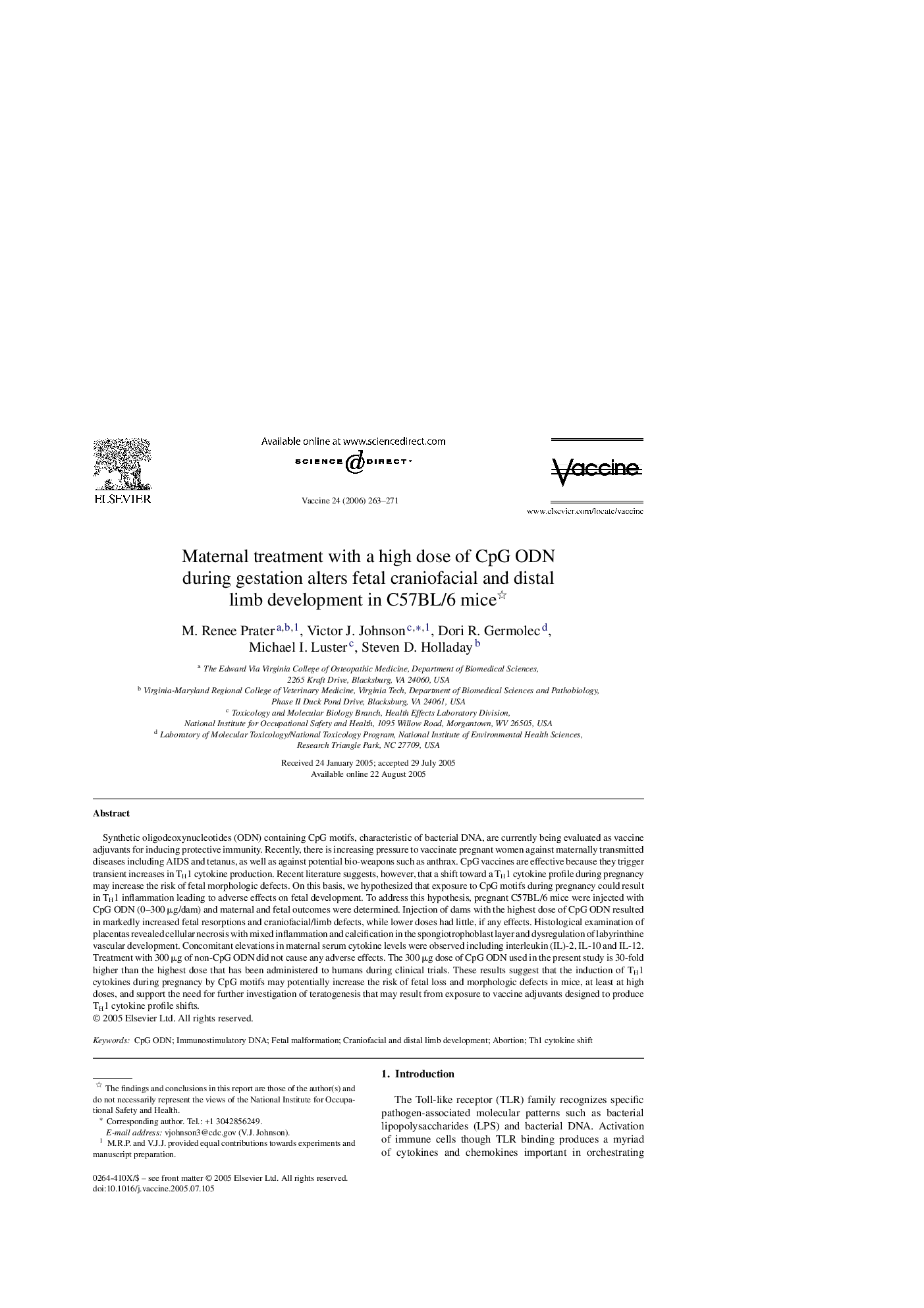| کد مقاله | کد نشریه | سال انتشار | مقاله انگلیسی | نسخه تمام متن |
|---|---|---|---|---|
| 2410056 | 1103245 | 2006 | 9 صفحه PDF | دانلود رایگان |

Synthetic oligodeoxynucleotides (ODN) containing CpG motifs, characteristic of bacterial DNA, are currently being evaluated as vaccine adjuvants for inducing protective immunity. Recently, there is increasing pressure to vaccinate pregnant women against maternally transmitted diseases including AIDS and tetanus, as well as against potential bio-weapons such as anthrax. CpG vaccines are effective because they trigger transient increases in TH1 cytokine production. Recent literature suggests, however, that a shift toward a TH1 cytokine profile during pregnancy may increase the risk of fetal morphologic defects. On this basis, we hypothesized that exposure to CpG motifs during pregnancy could result in TH1 inflammation leading to adverse effects on fetal development. To address this hypothesis, pregnant C57BL/6 mice were injected with CpG ODN (0–300 μg/dam) and maternal and fetal outcomes were determined. Injection of dams with the highest dose of CpG ODN resulted in markedly increased fetal resorptions and craniofacial/limb defects, while lower doses had little, if any effects. Histological examination of placentas revealed cellular necrosis with mixed inflammation and calcification in the spongiotrophoblast layer and dysregulation of labyrinthine vascular development. Concomitant elevations in maternal serum cytokine levels were observed including interleukin (IL)-2, IL-10 and IL-12. Treatment with 300 μg of non-CpG ODN did not cause any adverse effects. The 300 μg dose of CpG ODN used in the present study is 30-fold higher than the highest dose that has been administered to humans during clinical trials. These results suggest that the induction of TH1 cytokines during pregnancy by CpG motifs may potentially increase the risk of fetal loss and morphologic defects in mice, at least at high doses, and support the need for further investigation of teratogenesis that may result from exposure to vaccine adjuvants designed to produce TH1 cytokine profile shifts.
Journal: Vaccine - Volume 24, Issue 3, 16 January 2006, Pages 263–271